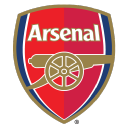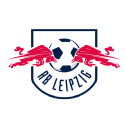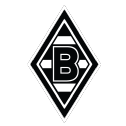If the European soccer season were like an NFL season, we’d already be almost half done. Arsenal‘s 0-3 start to the season would have all but ended the Gunners’ playoff hopes before they started. Juventus‘ five points in five matches would have relegated the Bianconeri to the wild-card race. The American football season is gone in a blink.
European soccer is obviously quite different. For one thing, the Jacksonville Jaguars aren’t mired in a relegation battle at the moment — no matter how much they deserve to be. And for another, the league season is nearly 40 matches long. A slow start can damage your odds of winning your league, but you have plenty of time to get back into contention. Just ask defending Premier League champion Manchester City, who dropped 16 points in their first 12 matches and found themselves stuck in 14th place in late November before scorching the league from that point forward.
There probably isn’t a Manchester City in this season’s batch of slow starters, but quite a few teams with big ambitions have begun the year in a rut. Let’s look at eight teams that entered the season with European ambitions (or something close) but have stumbled out of their gate. For each, we’ll compare their current season projections from FiveThirtyEight’s SPI to where they stood at the beginning of the season.
 Juventus (Italian Serie A)
Juventus (Italian Serie A)
So far: 5 matches, 5 points, -1 goal differential
Projection: Down seven points, from 74 (second) at the beginning of the season to 67 (fifth)
Late on Wednesday night, Juventus were in serious trouble. They began the day already 11 points back of Inter Milan in the Serie A race, having taken just two points from four matches, and they found themselves trailing host Spezia, last year’s 15th-place team, 2-1 past the 60-minute mark.
If the season turns around for Max Allegri’s squad, it will probably happen as it did on Wednesday: on the back of Federico Chiesa. In the 66th minute, he took on multiple defenders to work the ball into the box, played a quick combination of passes with Alvaro Morata, split two more defenders, then put the ball in the net. Defender Matthijs de Ligt scored six minutes later, and Juve survived.
The 3-2 win didn’t turn the entire ship around — they’re still eight points back, they’ve still been outscored this season, and this was still their longest wait for a league win in 60 years. But if Chiesa is capable of more moments like this, if the star turn he’s seen over the last 12 months expands further, he could drag Juve upward with him.
Chiesa and Morata have combined for three goals and 18 chances created (one assist) in 467 minutes. They have been excellent on a per-touch basis, but getting these two enough touches in dangerous areas, plus other attackers such as Paulo Dybala and Moise Kean, has been an issue. The primary culprit: a messy midfield. Star Sassuolo addition Manuel Locatelli is still integrating — he has 0.93 expected goals and assists (xG+xA) in 250 minutes — and Allegri has played eight different midfielders between 161 and 302 minutes.
This makeshift unit has been a sieve against opposition attacks. Before Wednesday’s match against Spezia, they had allowed 51% of opponent possessions to end in the attacking third — most in Serie A. Therefore, when they got the ball back, they were starting possessions closer to their own goal than anyone else. Ask an NFL coach how hard it is to win when you’re badly losing the field-position battle.
Juve also still have minimal pressing presence up front; when you lose Cristiano Ronaldo (he was allowed to join Manchester United), you expect your goal-scoring prowess to shrink but your pressing ability to grow. That hasn’t been the case. When opponents take possession, they’re allowed to move freely into dangerous areas. Juve have allowed far more shots than they’ve attempted, and despite some occasionally pretty buildup and solid individual attacking efforts, this has created a difficult situation.
FiveThirtyEight now gives them only a 43% chance of qualifying for next year’s Champions League, down from 67% at the beginning of the season. Until the defense, and the midfield defense in particular, starts obstructing opponents more, the dropped points could continue.
 AS Monaco (French Ligue 1)
AS Monaco (French Ligue 1)
So far: 7 matches, 8 points, -2 goal differential
Projection: Down seven points, from 68 (second) at the beginning of the season to 54 (fourth)
That defending Ligue 1 champions Lille have struggled out of the gate — their 2-1 win over Reims on Wednesday bumped them to eight points in seven matches — was not an incredible surprise. Les Dogues underwent a managerial change and, for cost-cutting reasons, saw more proven talent leaving (Mike Maignan, Boubakary Soumare) the club than arriving.
By comparison, Monaco enjoyed a solid amount of continuity. They finished the 2020-21 campaign playing as well or better than both Lille and Paris Saint-Germain, and manager Niko Kovacs returned for a second season. While they lost full-back Benjamin Henrichs to RB Leipzig, they brought in a couple of fun, young players in AZ Alkmaar‘s Myron Boadu and Lyon‘s Jean Lucas.
They also brought in goalkeeper Alexander Nubel on loan from Bayern Munich, though he has suffered just about the worst start imaginable to his season on the French Riviera. The 24-year old has faced 19 shots on goal worth 6.1 xGOT; he has allowed 10 goals, dropping his save percentage down to a level rarely seen in Europe’s Big 5 leagues. It’s even worse than what Chelsea‘s Kepa Arrizabalaga went through in 2019-20.
Monaco has allowed by far the fewest shots per possession in Ligue 1, and their xG differential of +0.45 per match ranks sixth — not as good as expected, but not bad. Unfortunately, that +0.45 xG turns into a goal differential of minus-0.67 per match.
Kovacs has played with lots of formations, and Monaco has the highest possession rate in the league (61.5%). In theory, if Nubel rediscovers his confidence and gets a few more bounces, Monaco could charge back up the table. Perhaps that resurgence began with Wednesday’s comfortable 3-1 win over 10-man Saint-Etienne. But even in the win, Saint-Etienne scored on a shot worth just 0.16 xGOT. You’re not qualifying for the Champions League if opponents are finding it that easy to score.
 Arsenal (English Premier League)
Arsenal (English Premier League)
So far: 5 matches, 6 points, -7 goal differential
Projection: Down six points, from 60 (fifth) at the beginning of the season to 54 (ninth)
Coming off an eighth-place finish that kept them out of all European competitions this season, Arsenal certainly weren’t entertaining goals of finishing in the top four — especially not with the attempted youth movement they begrudgingly began this summer. Still, FiveThirtyEight projected them fifth, which would have at least meant for a Europa League appearance.
Just five matches in, their projection has fallen to a lower spot than even last year’s finish. Granted, the Gunners have won two in a row after a dire three-match losing streak to start, but two wins over lower-table teams (Burnley and Norwich City, 19th and 20th, respectively) does not a turnaround make. After losing your first three by a combined 9-0, winning a pair of one-nils does feel like a start, at least.
Arsenal still suffer from a severe shot quality issue — they’re seventh in the Premier League in shots per possession, but they’re dead last in both xG per shot and post-shot xG per shot on target (xGOT/SOT). They have been beset by both poor execution and poor fortune. The xG numbers are indeed awful, but the quartet of Nicolas Pepe, Pierre-Emerick Aubameyang, Emile Smith-Rowe and Bukayo Saka have combined for shots worth 4.2 xG but have scored only once. That should improve over time.
Worse yet, however, opponents have not had the same issues: Arsenal rank 16th in shots per possession allowed, 17th in xG allowed per shot and, again, dead last in xGOT/SOT. Arsenal players have attempted rare and iffy shots poorly; opponents — the first three, at least — have placed frequent high-quality shots well. Not a great combination.
Grinding out a couple of tight wins could boost confidence a bit, and the finishing should come around at some point. But Arsenal have one more problem to deal with: What exactly are they? They’re not a pressure team — they’re 17th in passes allowed per defensive action (PPDA), stuck in a zone of passivity with teams such as Burnley, Watford, Norwich and Newcastle. They start almost no possessions in the attacking third; in fact, opponents have enjoyed far more touches in that zone (197.0 per match to 162.6).
They’re not really a possession team, either. Their possession rate is a solid 56% when tied, but it’s 47% when they’re ahead and a baffling 37% when they’re behind. They can’t take the ball off of the other team even when they really need to.
They’re also not a direct, counter-attacking team — they’re 15th in Stats Perform’s direct speed measure, the number of meters the ball travels (when measuring directly upfield) divided by the total time of a given sequence. Their two goals have come from possessions that featured just eight total passes, and with players such as Smith-Rowe and Saka, they seem to have the potential to play more direct. But there’s no urgency, and the result has been that 93% of their shots have come with two-plus defenders between the shot and goal. Only Burnley have attempted a higher percentage.
There were way too many Burnley comparisons in this section for a team with Arsenal’s financial clout. But at least Burnley know what they are.
 Leeds United (English Premier League)
Leeds United (English Premier League)
So far: 5 matches, 3 points, -3 goal differential
Projection: Down six points, from 50 (11th) at the beginning of the season to 44 (14th)
Marcelo Bielsa’s Leeds were easily one of the best stories of the 2020-21 season. In a campaign with major fixture congestion, in which everyone seemed to be monitoring effort levels and spending as much time as possible in third gear, Leeds were all sprint, all the time. Their 9.3 passes per defensive action (PPDA) average was the only one under 10 in the Premier League, and their 101.7 possessions per match were easily the highest. They held opponents to 3.5 passes per possession and challenged them at all times (76.2 ground duels per match, third most).
In their first season back in the Premier League after a 16-year absence, they rode a late hot streak to a stirring ninth-place finish. Like Arsenal, they didn’t enter the season with Champions League aspirations, but the Europa or Conference League didn’t seem out of the question.
The DNA remains the same this year, but the results have vanished. They’re still at a solid 10.9 PPDA (third in the league), their 101.2 possessions are still the most and they’re allowing opponents only 3.6 passes per possession. Ground duels are down a bit (69.4), but they’re winning a ton of them (55%, second in the league).
Turning this intensity into actual scoring chances, however, has become much more difficult. Opponents are cluttering up the midfield passing lanes much better and forcing them to take their time, and it’s making life difficult for midfielders Jack Harrison and Rodrigo.
Rodrigo averaged 0.61 xG+xA per 90 last season, and Harrison averaged 0.37. Their averages early this year: 0.36 and 0.10, respectively. Leeds are still attempting as many shots as last year (0.14 shots per possession both seasons), but they’ve gone from 10th to 19th in xG per shot and from eighth to 17th in xGOT/SOT. Forward Patrick Bamford was a breakout star in 2020-21, but his shot quality has suffered slightly (from 0.18 xG per shot to 0.15), and he has just one goal in five matches after scoring 17 last season.
Bielsa is a walking soccer encyclopedia, and he almost certainly has plenty of ideas for how to un-muck the midfield. But as many teams do in their second Premier League seasons, Leeds are finding it a much rougher go.
 RB Leipzig (German Bundesliga)
RB Leipzig (German Bundesliga)
So far: 5 matches, 4 points, -1 goal differential
Projection: Down five points, from 64 (third) at the beginning of the season to 59 (third)
When Jesse Marsch got promoted from manager of RB Salzburg to Leipzig, his odds of success were quite high. He’d done well in Salzburg — his team didn’t have the staying power to advance in the Champions League, but they took four points from Lokomotiv Moscow, had Bayern tied in Salzburg after 75 minutes and had Atletico Madrid tied after 80. Now he was going to add the “gegen” back to RBL’s pressing and increase the energy levels after Julian Nagelsmann had turned them into a more controlled possession team.
The thing about a frenetic, press-heavy team with a high defensive line, however, is that said defensive line has to be really sturdy. Chemistry levels need to be high, too. But they not only lost Nagelsmann to Bayern, but also defender Dayot Upamecano (midfielder Marcel Sabitzer left late in the summer transfer window, too). Ibrahima Konate left for Liverpool. Marsch was left attempting a personnel chemistry experiment while also installing a low-margin-for-error style.
In retrospect, a slow start should have been expected, as the glitches have just been too costly. RBL rank sixth in the Bundesliga in shots allowed per possession, but they’re 16th of 18 teams in xG allowed per shot. Borussia Dortmund, another potential German contender with a new manager, rank even worse in terms of defensive breakdowns, but has the otherworldly Erling Haaland heading an attack that bails them out.
Marsch has more newcomers — namely, forward Andre Silva and Dominik Szoboszlai — still getting accustomed to their new roles. RBL’s attack has been inconsistent against organized teams, and their defense has gotten torn apart; they allowed 10 combined goals to Bayern Munich and Manchester City over 180 minutes.
In theory, this all jells at some point. Despite the summer raiding by big clubs, RBL might have more fun, young talent than it ever has before. Szoboszlai has two goals and nine chances created, while winger Christopher Nkunku has created 10 chances and scored a hat trick in the Champions League against City. When attacking midfielder Dani Olmo gets his sea legs back after a busy summer and the back line actually gels a bit, RBL could ignite. But how many points will they have dropped by the time that happens? And will Marsch still have his job?
 Leicester City (English Premier League)
Leicester City (English Premier League)
So far: 5 matches, 6 points, -3 goal differential
Projection: Down five points, from 57 (seventh) at the beginning of the season to 52 (10th)
After starting quickly and fading just enough to finish fifth — just out of the running for a Champions League slot — the past two seasons, Brendan Rodgers’ Foxes had a chance for another fast start in 2021-22. They were to face only two teams that finished in last year’s Premier League top 10 (West Ham away, Manchester City at home) in their first seven matches — only it hasn’t turned out that way.
Granted, a loss with 10 men to West Ham and a respectable 1-0 loss to City aren’t anything to be ashamed of, but Sunday’s 2-1 loss to Brighton was a setback. They’re in 12th place five matches in.
This isn’t a simple case of unlucky bounces — Leicester is 17th in xG differential, 19th in attack and 16th in defense. Defense is obviously an issue, magnified by the loss of both center-back Wesley Fofana and defensive midfielder Nampalys Mendy to injury. But their ball progression has completely fallen apart. They are averaging just 121.4 touches per 90 in the attacking third (16th), and they’re therefore averaging only 0.10 shots per possession (20th). They’re pretty good shots, but when opponents are attempting twice as many shots as you, that’s a problem.
If or when James Maddison finds the form he established over much of 2020-21, that will help immensely.
– Maddison in 2020-21: 64.4 touches per 90, 83.3% pass completion rate, 2.2 chances created per 90
– Maddison in 2021-22: 39.4 touches, 72.6% pass completion, 0.8 chances
Maddison combined eight league goals with five assists (among 51 chances) last season, but he hasn’t scored since Feb. 21, and he hasn’t recorded an assist since Feb. 3. He was yanked at halftime against Brighton. Youri Tielemans has attempted to pick up slack for Maddison’s lost production, but it has only worked so well. The Foxes have more creative attacking talent than they have since Riyad Mahrez left, but until they can work the ball into dangerous areas, those creative pieces can’t create.
 Borussia Mönchengladbach (German Bundesliga)
Borussia Mönchengladbach (German Bundesliga)
So far: 5 matches, 4 points, -4 goal differential
Projection: Down three points, from 50 (sixth) at the beginning of the season to 47 (seventh)
After losing manager Marco Rose to Borussia Dortmund, Gladbach plucked Adi Hutter from Eintracht Frankfurt — and now both Gladbach and Eintracht have four points after five matches. After an encouraging 1-1 draw with Bayern in the opener, they have been drubbed by Bayer Leverkusen and suffered one-goal losses to Union Berlin and Augsburg.
Poor and/or unfortunate finishing is at the root of a lot of their issues. Die Fohlen are averaging 1.9 xG per 90 (sixth) and taking 25% of their shots with under two defenders between the shot and the goal (second). But that’s translated into just 1.0 actual goals per match (14th).
With Alassane Plea working his way into form after a preseason injury (he’s got nine shots and one goal in 378 minutes) and Marcus Thuram out until at least mid-October with a torn MCL — an injury that allegedly prevented a €25 million move to Inter Milan — Hutter has had to rely on creation from attacking midfielders Lars Stindl, Jonas Hofmann, Hannes Wolf and Patrick Herrmann. They have attempted 31 shots worth 4.8 xG (that’s a decent 0.16 xG per shot), but they’ve put only three goals in the net. Combine that with a possession team’s vulnerability to counter attacks and solid scoring chances, and you’ve got problems.
Assuming the finishing begins to progress toward the mean, Gladbach could still make a run at a Champions League bid. Indeed, their projections have only dropped three points since the start of the season, so life in the relegation zone shouldn’t last long. But they’ve got matches against third-place Borussia Dortmund and second-place Wolfsburg in the next two matches. It could get worse before it gets better.
 Villarreal (Spanish LaLiga)
Villarreal (Spanish LaLiga)
So far: 4 matches, 4 points, +0 goal differential
Projection: Down two points, from 60 (sixth) at the beginning of the season to 58 (sixth)
At the near-midway point of the 2020-21 La Liga campaign, Villarreal stood in fourth place, just two points back of Barcelona and six behind first-place Atletico Madrid. They had lost just twice in 18 matches, but a predilection for draws — eight of them to that point — was keeping them slightly off the pace. They’d suffer four more draws following a 4-0 win over Celta Vigo, then a quick jolt of three losses in four matches eliminated them from top-four contention altogether. Their Europa League victory allowed them a back-passage way into the Champions League anyway, but the draws hurt the overall cause.
Forward Boulaye Dia and Gerard Moreno had turned 16 shots and 2.05 xG into zero goals; after combining 41 goals with 12 assists in the past two seasons, Moreno has zero of each in 270 minutes, and he’s out with a minor injury. He’ll snap out of his funk eventually, and Villarreal might have begun to as well on Wednesday.
Credit: Source link